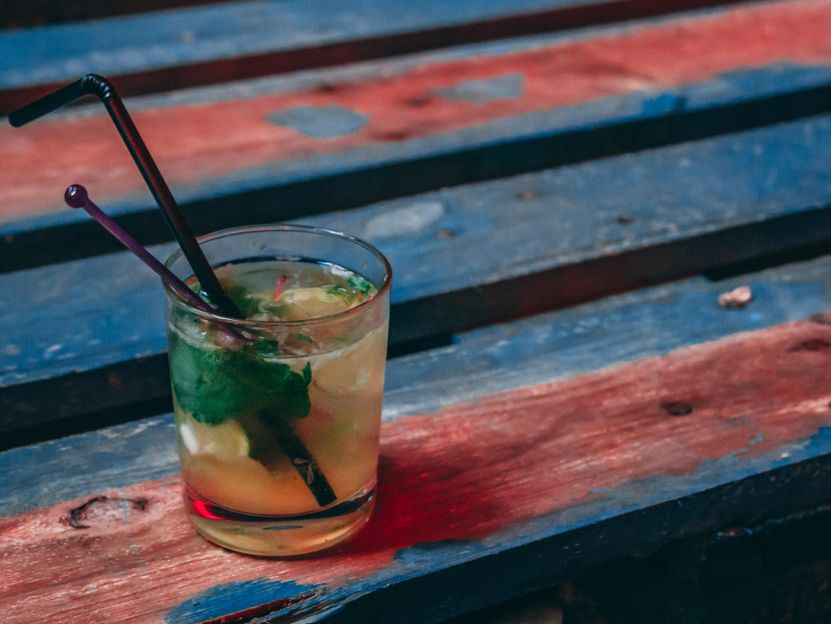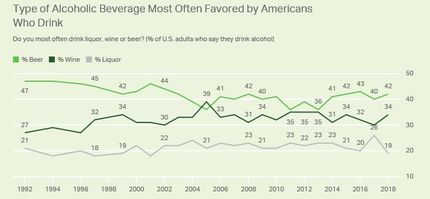Dry January is just one month but BFY alcohol drinks appeal throughout the year
Low-cal replaces light beer, wine gets “clean”, and spirits cut carbs
Advertisement
Let’s face it. The events of 2020 and the first few weeks of 2021 have made Dry January a challenging prospect. And while we may see fewer consumers participate in Dry January this year, the concept of Dry January has entered the collective consciousness in just a few short years (Dry January was created in the UK in 2013). Dry January helped to expand the broader idea of “mindful drinking” and “sober curious consumers” which in turn has led to the proliferation of zero-proof alcoholic beverages. The fact that Budweiser is promoting its new non-alcoholic beer, Budweiser Zero, for Dry January in partnership with sports stars such as Dwayne Wade underscores the strong growth of alcohol-free drinks.

Photo by Kévin Hikari on Unsplash
Zero proof, non-alcoholic drinks, and alcohol-alternatives will remain a growing, if relatively small, segment of the total alcoholic beverage market. The sober curious trend may be growing but many more consumers want to enjoy alcoholic drinks, they just want healthier options. Consumers don’t expect alcoholic beverages to be “healthy” but they are interested in better-for-you (BFY) options, drinks that deliver flavor and refreshment without the sugar and calories. Alcohol brands across all segments have responded and launched new and exciting BFY products, making health and wellness one of the major trends within the alcohol industry.
Rise of hard seltzers demonstrates opportunity for BFY drinks
Consumer interest in BFY drinks is evident by the monumental growth of hard seltzers. Brands like White Claw and Truly exploded in popularity in large part due to their health and wellness claims (eg gluten-free, low-sugar, low-calorie), appealing to consumers interested in a BFY alternative to beer. Nearly seven out of 10 hard seltzer drinkers say health drives their alcoholic beverage drink choice, according to Mintel research on ready to drink alcoholic beverages.
Now nearly every alcoholic beverage company is launching its own hard seltzer varieties and brands are increasingly leaning on health and wellness claims as market differentiators. For example, Smirnoff’s Spiked Sparkling Seltzers are under 100 calories and contain zero grams of sugar. In addition to no/low claims, new seltzers also offer consumers health and functional benefits. Molson Coors’ Vizzy hard seltzer is high in vitamin C and antioxidants.
Low-cal replaces light beer, wine gets “clean”, and spirits cut carbs
The popularity of hard seltzers along with general increased interest in health and wellness is shaping alcohol beverage trends with BFY claims growing across all alcohol segments.
After years of declining light beer sales, brewers are now releasing low-calorie craft-style beers; BFY options for craft beer drinkers who avoid traditional light beers. Products such as Lagunitas DayTime IPA and Goose Island So-Lo IPA are said to deliver the flavor of an IPA with only 98 calories. One in five beer drinkers cite “low in calories” as an important factor when choosing a beer, according to Mintel US research on beer.
Low sugar and “clean” production claims are shaping the wine industry with brands such as Avalaine wine promoting their products as having no filler ingredients common in wine production. Low-sugar wine brand FitVine is following in the footsteps of other athlete-focused alcohol brands, explicitly marketing their products to health-conscious consumers. Even mass-market wine brands are creating new BFY products; Constellation Brands launched Kim Crawford Illuminate a low-calorie, low-ABV wine in November 2020.
Similar to beer and wine, spirit brands are using health and wellness claims to differentiate themselves within the market and appeal to health-conscious, generally affluent, consumers; one in five spirit drinkers aged 22-34 in households earning more than $75K cite “low-sugar” as an important attribute when choosing a spirit. Ketel One Botanical was one of the first notable spirit brands to make explicit BFY claims (no carbs and only 73 calories). Other brands such as Dulce Vida have followed suit by touting low-carb, low-calorie claims.
Spirit brands are carving out a space within the BFY alcohol trend by launching low-ABV products such as Keel Vodka (23.8% ABV). The low-ABV trend is quickly gaining traction within the United Kingdom with the introduction of gin-like low-ABV spirits including Mary (6% ABV) and Atopia (0.5%). The emergence of low-ABV spirits across the pond is notable as many BFY alcohol trends are first established within the UK/Europe before crossing over to the US.
Key takeaway
BFY is one of the most prevalent trends across all alcoholic beverage segments and consumer interest in BFY drinks won’t abate come the end of January. Brands have the opportunity to mitigate consumers’ health concerns by crafting low-carb, low-calorie, and even low-ABV products that deliver on taste/flavor while also focusing on fun so consumers do not feel as though they are losing out on the enjoyment of drinking.

























































